- Home
- Agatha Christie
Partners in Crime Page 13
Partners in Crime Read online
Page 13
‘Going to do me in? That’s the correct expression, I believe. You have got it in for me.’
‘You’ve got a nerve all right. No, we shan’t attempt violence. Just keep you under restraint, so to speak.’
‘I’m afraid you’re backing the wrong horse,’ said Tommy. ‘I’ve no intention of being “kept under restraint,” as you call it.’
Mr Ryder smiled genially. From outside a cat uttered a melancholy cry to the moon.
‘Banking on that cross you put on the door, eh, sonny?’ said Mr Ryder. ‘I shouldn’t if I were you. Because I know that story you mentioned. Heard it when I was a little boy. I stepped back into the alleyway to enact the part of the dog with eyes as big as cart-wheels. If you were in that alley now, you would observe that every door in the alley is marked with an identical cross.’
Tommy dropped his head despondently.
‘Thought you were mighty clever, didn’t you?’ said Ryder.
As the words left his lips a sharp rapping sounded on the door.
‘What’s that?’ he cried, starting.
At the same time an assault began on the front of the house. The door at the back was a flimsy affair. The lock gave almost immediately and Inspector Marriot showed in the doorway.
‘Well done, Marriot,’ said Tommy. ‘You were quite right as to the district. I’d like you to make the acquaintance of Mr Hank Ryder who knows all the best fairy tales.
‘You see, Mr Ryder,’ he added gently, ‘I’ve had my suspicions of you. Albert (that important-looking boy with the big ears is Albert) had orders to follow on his motorcycle if you and I went off joy-riding at any time. And whilst I was ostentatiously marking a chalk cross on the door to engage your attention, I also emptied a little bottle of valerian on the ground. Nasty smell, but cats love it. All the cats in the neighbourhood were assembled outside to mark the right house when Albert and the police arrived.’
He looked at the dumb founded Mr Ryder with a smile, then rose to his feet.
‘I said I would get you Crackler, and I have got you,’ he observed.
‘What the hell are you talking about?’ asked Mr Ryder. ‘What do you mean–Crackler?’
‘You will find it in the glossary of the next criminal dictionary,’ said Tommy. ‘Etymology doubtful.’
He looked round him with a happy smile.
‘And all done without a nose,’ he murmured brightly. ‘Good-night, Marriot. I must go now to where the happy ending of the story awaits me. No reward like the love of a good woman–and the love of a good woman awaits me at home–that is, I hope it does, but one never knows nowadays. This has been a very dangerous job, Marriot. Do you know Captain Jimmy Faulkener? His dancing is simply too marvellous, and as for his taste in cocktails –! Yes, Marriot, it has been a very dangerous job.’
Chapter 11
The Sunningdale Mystery
‘Do you know where we are going to lunch today, Tuppence?’
Mrs Beresford considered the question.
‘The Ritz?’ she suggested hopefully.
‘Think again.’
‘That nice little place in Soho?’
‘No.’ Tommy’s tone was full of importance. ‘An ABC shop. This one, in fact.’
He drew her deftly inside an establishment of the kind indicated, and steered her to a corner marble-topped table.
‘Excellent,’ said Tommy with satisfaction, as he seated himself. ‘Couldn’t be better.’
‘Why has this craze for the simple life come upon you?’ demanded Tuppence.
‘You see, Watson, but you do not observe. Iwonder now whether one of these haughty damsels would condescend to notice us? Splendid, she drifts this way. It is true that she appears to be thinking of something else, but doubtless her sub-conscious mind is functioning busily with such matters as ham and eggs and pots of tea. Chop and fried potatoes, please, miss, and a large coffee, a roll and butter, and a plate of tongue for the lady.’
The waitress repeated the order in a scornful tone, but Tuppence leant forward suddenly and interrupted her.
‘No, not a chop and fried potatoes. This gentleman will have a cheesecake and a glass of milk.’
‘A cheesecake and a milk,’ said the waitress with even deeper scorn, if that were possible. Still thinking of something else, she drifted away again.
‘That was uncalled for,’ said Tommy coldly.
‘But I’m right, aren’t I? You are the Old Man in the Corner? Where’s your piece of string?’
Tommy drew a long twisted mesh of string from his pocket and proceeded to tie a couple of knots in it.
‘Complete to the smallest detail,’ he murmured.
‘You made a small mistake in ordering your meal, though.’
‘Women are so literal-minded,’ said Tommy. ‘If there’s one thing I hate it’s milk to drink, and cheese-cakes are always so yellow and bilious-looking.’
‘Be an artist,’ said Tuppence. ‘Watch me attack my cold tongue. Jolly good stuff, cold tongue. Now then, I’m all ready to be Miss Polly Burton. Tie a large knot and begin.’
‘First of all,’ said Tommy, ‘speaking in a strictly unofficial capacity, let me point out this. Business is not too brisk lately. If business does not come to us, we must go to business. Apply our minds to one of the great public mysteries of the moment. Which brings me to the point–the Sunningdale Mystery.’
‘Ah!’ said Tuppence, with deep interest. ‘The Sunningdale Mystery!’
Tommy drew a crumpled piece of newspaper from his pocket and laid it on the table.
‘That is the latest portrait of Captain Sessle as it appeared in the Daily Leader.’
‘Just so,’ said Tuppence. ‘I wonder someone doesn’t sue these newspapers sometimes. You can see it’s a man and that’s all.’
‘When I said the Sunningdale Mystery, I should have said the so-called Sunningdale Mystery,’ went on Tommy rapidly.
‘A mystery to the police perhaps, but not to an intelligent mind.’
‘Tie another knot,’ said Tuppence.
‘I don’t know how much of the case you remember,’ continued Tommy quietly.
‘All of it,’ said Tuppence, ‘but don’t let me cramp your style.’
‘It was just over three weeks ago,’ said Tommy, ‘that the gruesome discovery was made on the famous golf links. Two members of the club, who were enjoying an early round, were horrified to find the body of a man lying face downwards on the seventh tee. Even before they turned him over they had guessed him to be Captain Sessle, a well-known figure on the links, and who always wore a golf coat of a peculiarly bright blue colour.
‘Captain Sessle was often seen out on the links early in the morning, practising, and it was thought at first that he had been suddenly overcome by some form of heart disease. But examination by a doctor revealed the sinister fact that he had been murdered, stabbed to the heart with a significant object, a woman’s hatpin. He was also found to have been dead at least twelve hours.
‘That put an entirely different complexion on the matter, and very soon some interesting facts came to light. Practically the last person to see Captain Sessle alive was his friend and partner, Mr Hollaby of the Porcupine Assurance Co, and he told his story as follows:
‘Sessle and he had played a round earlier in the day. After tea the other suggested that they should play a few more holes before it got too dark to see. Hollaby assented. Sessle seemed in good spirits, and was in excellent form. There is a public footpath that crosses the links, and just as they were playing up to the sixth green, Hollaby noticed a woman coming along it. She was very tall, and dressed in brown, but he did not observe her particularly, and Sessle, he thought, did not notice her at all.
‘The footpath in question crossed in front of the seventh tee,’ continued Tommy. ‘The woman had passed along this and was standing at the farther side, as though waiting. Captain Sessle was the first to reach the tee, as Mr Hollaby was replacing the pin in the hole. As the latter came towards the tee,
he was astonished to see Sessle and the woman talking together. As he came nearer, they both turned abruptly, Sessle calling over his shoulder: “Shan’t be a minute.”
‘The two of them walked off side by side, still deep in earnest conversation. The footpath there leaves the course, and, passing between the two narrow hedges of neighbouring gardens, comes out on the road to Windlesham.
‘Captain Sessle was as good as his word. He reappeared within a minute or two, much to Hollaby’s satisfaction, as two other players were coming up behind them, and the light was failing rapidly. They drove off, and at once Hollaby noticed that something had occurred to upset his companion. Not only did he foozle his drive badly, but his face was worried and his forehead creased in a big frown. He hardly answered his companion’s remarks, and his golf was atrocious. Evidently something had occurred to put him completely off his game.
‘They played that hole and the eighth, and then Captain Sessle declared abruptly that the light was too bad and that he was off home. Just at that point there is another of those narrow “slips” leading to the Windlesham road, and Captain Sessle departed that way, which was a short cut to his home, a small bungalow on the road in question. The other two players came up, a Major Barnard and Mr Lecky, and to them Hollaby mentioned Captain Sessle’s sudden change of manner. They also had seen him speaking to the woman in brown, but had not been near enough to see her face. All three men wondered what she could have said to upset their friend to that extent.
‘They returned to the clubhouse together, and as far as was known at the time, were the last people to see Captain Sessle alive. The day was a Wednesday, and on Wednesday cheap tickets to London are issued. The man and wife who ran Captain Sessle’s small bungalow were up in town, according to custom, and did not return until the late train. They entered the bungalow as usual, and supposed their master to be in his room asleep. Mrs Sessle, his wife, was away on a visit.
‘The murder of the Captain was a nine days’ wonder. Nobody could suggest a motive for it. The identity of the tall woman in brown was eagerly discussed, but without result. The police were, as usual, blamed for their supineness–most unjustly, as time was to show. For a week later, a girl called Doris Evans was arrested and charged with the murder of Captain Anthony Sessle.
‘The police had had little to work upon. A strand of fair hair caught in the dead man’s fingers and a few threads of flame-coloured wool caught on one of the buttons of his blue coat. Diligent inquiries at the railway station and elsewhere had elicited the following facts.
‘A young girl dressed in a flame-coloured coat and skirt had arrived by train that evening about seven o’clock and had asked the way to Captain Sessle’s house. The same girl had reappeared again at the station, two hours later. Her hat was awry and her hair tousled, and she seemed in a state of great agitation. She inquired about the trains back to town, and was continually looking over her shoulder as though afraid of something.
‘Our police force is in many ways very wonderful. With this slender evidence to go upon, they managed to track down the girl and identify her as one Doris Evans. She was charged with murder and cautioned that anything she might say would be used against her, but she nevertheless persisted in making a statement, and this statement she repeated again in detail, without any subsequent variation, at the subsequent proceedings.
‘Her story was this. She was a typist by profession, and had made friends one evening, in a cinema, with a well-dressed man, who declared he had taken a fancy to her. His name, he told her, was Anthony, and he suggested that she should come down to his bungalow at Sunningdale. She had no idea then, or at any other time, that he had a wife. It was arranged between them that she should come down on the following Wednesday–the day, you will remember, when the servants would be absent and his wife away from home. In the end he told her his full name was Anthony Sessle, and gave her the name of his house.
‘She duly arrived at the bungalow on the evening in question, and was greeted by Sessle, who had just come in from the links. Though he professed himself delighted to see her, the girl declared that from the first his manner was strange and different. A half-acknowledged fear sprang up in her, and she wished fervently that she had not come.
‘After a simple meal, which was all ready and prepared, Sessle suggested going out for a stroll. The girl consenting, he took her out of the house, down the road, and along the “slip” on to the golf course. And then suddenly, just as they were crossing the seventh tee, he seemed to go completely mad. Drawing a revolver from his pocket, he brandished it in the air, declaring that he had come to the end of his tether.
‘“Everything must go! I’m ruined–done for. And you shall go with me. I shall shoot you first–then myself. They will find our bodies here in the morning side by side–together in death.”
‘And so on–a lot more. He had hold of Doris Evans by the arm, and she, realising she had to do with a madman, made frantic efforts to free herself, or failing that to get the revolver away from him. They struggled together, and in that struggle he must have torn out a piece of her hair and got the wool of her coat entangled on a button.
‘Finally, with a desperate effort, she freed herself, and ran for her life across the golf links, expecting every minute to be shot down with a revolver bullet. She fell twice, tripping over the heather, but eventually regained the road to the station and realised that she was not being pursued.
‘That is the story that Doris Evans tells–and from which she has never varied. She strenuously denies that she ever struck at him with a hatpin in self-defence–a natural enough thing to do under the circumstances, though–and one which may well be the truth. In support of her story, a revolver has been found in the furze bushes near where the body was lying. It had not been fired.
‘Doris Evans has been sent for trial, but the mystery still remains a mystery. If her story is to be believed, who was it who stabbed Captain Sessle? The other woman, the tall woman in brown, whose appearance so upset him? So far no one has explained her connection with the case. She appears out of space suddenly on the footpath across the links, she disappears along the slip, and no one ever hears of her again. Who was she? A local resident? A visitor from London? If so, did she come by car or by train? There is nothing remarkable about her except her height; no one seems to be able to describe her appearance. She could not have been Doris Evans, for Doris Evans is small and fair, and moreover was only just then arriving at the station.’
‘The wife?’ suggested Tuppence. ‘What about the wife?’
‘A very natural suggestion. But Mrs Sessle is also a small woman, and besides, Mr Hollaby knows her well by sight, and there seems no doubt that she was really away from home. One further development has come to light. The Porcupine Assurance Co is in liquidation. The accounts reveal the most daring misappropriation of funds. The reasons for Captain Sessle’s wild words to Doris Evans are now quite apparent. For some years past he must have been systematically embezzling money. Neither Mr Hollaby nor his son had any idea of what was going on. They are practically ruined.
‘The case stands like this. Captain Sessle was on the verge of discovery and ruin. Suicide would be a natural solution, but the nature of the wound rules that theory out. Who killed him? Was it Doris Evans? Was it the mysterious woman in brown?’
Tommy paused, took a sip of milk, made a wry face, and bit cautiously at the cheesecake.
II
‘Of course,’ murmured Tommy, ‘I saw at once where the hitch in this particular case lay, and just where the police were going astray.’
‘Yes?’ said Tuppence eagerly.
Tommy shook his head sadly.
‘I wish I did. Tuppence, it’s dead easy being the Old Man in the Corner up to a certain point. But the solution beats me. Who did murder the beggar? I don’t know.’
He took some more newspaper cuttings out of his pocket.
‘Further exhibits–Mr Hollaby, his son, Mrs Sessle, Doris Evans.’
&
nbsp; Tuppence pounced on the last and looked at it for some time.
‘She didn’t murder him anyway,’ she remarked at last. ‘Not with a hatpin.’
‘Why this certainty?’
‘A lady Molly touch. She’s got bobbed hair. Only one woman in twenty uses hatpins nowadays, anyway–long hair or short. Hats fit tight and pull on–there’s no need for such a thing.’
‘Still, she might have had one by her.’
‘My dear boy, we don’t keep them as heirlooms! What on earth should she have brought a hatpin down to Sunningdale for?’
‘Then it must have been the other woman, the woman in brown.’
‘I wish she hadn’t been tall. Then she could have been the wife. I always suspect wives who are away at the time and so couldn’t have had anything to do with it. If she found her husband carrying on with that girl, it would be quite natural for her to go for him with a hatpin.’
‘I shall have to be careful, I see,’ remarked Tommy.
But Tuppence was deep in thought and refused to be drawn.
‘What were the Sessles like?’ she asked suddenly. ‘What sort of things did people say about them?’
‘As far as I can make out, they were very popular. He and his wife were supposed to be devoted to one another. That’s what makes the business of the girl so odd. It’s the last thing you’d have expected of a man like Sessle. He was an ex-soldier, you know. Came into a good bit of money, retired, and went into this Insurance business. The last man in the world, apparently, whom you would have suspected of being a crook.’
‘It is absolutely certain that he was the crook? Couldn’t it have been the other two who took the money?’
‘The Hollabys? They say they’re ruined.’
‘Oh, they say! Perhaps they’ve got it all in a bank under another name. I put it foolishly, I dare say, but you know what I mean. Suppose they’d been speculating with the money for some time, unbeknownst to Sessle, and lost it all. It might be jolly convenient for them that Sessle died just when he did.’

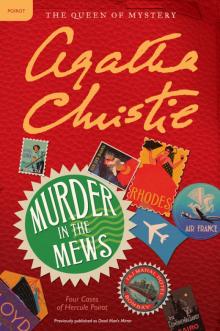 Murder in the Mews
Murder in the Mews Postern of Fate
Postern of Fate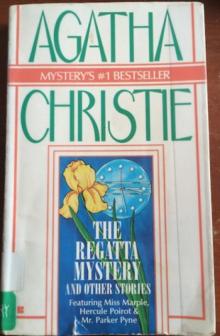 The Regatta Mystery and Other Stories
The Regatta Mystery and Other Stories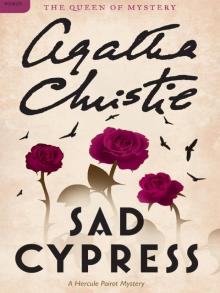 Sad Cypress
Sad Cypress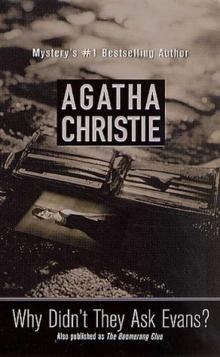 Why Didn't They Ask Evans?
Why Didn't They Ask Evans? After the Funeral
After the Funeral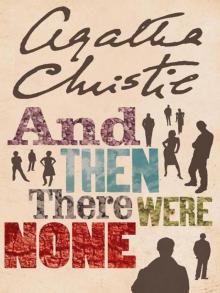 And Then There Were None
And Then There Were None The Witness for the Prosecution
The Witness for the Prosecution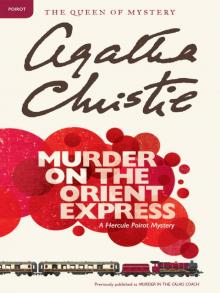 Murder on the Orient Express
Murder on the Orient Express The Seven Dials Mystery
The Seven Dials Mystery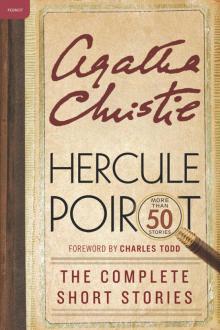 Hercule Poirot: The Complete Short Stories
Hercule Poirot: The Complete Short Stories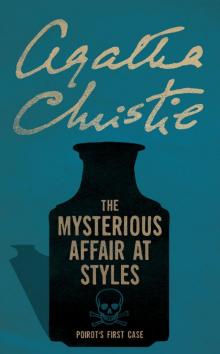 The Mysterious Affair at Styles
The Mysterious Affair at Styles Sleeping Murder
Sleeping Murder Hickory Dickory Dock
Hickory Dickory Dock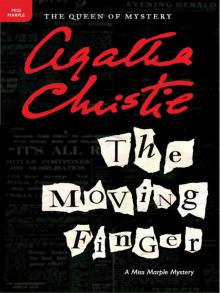 The Moving Finger
The Moving Finger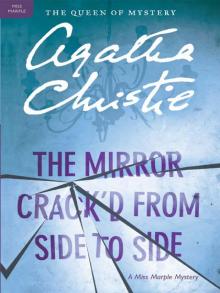 The Mirror Crack'd From Side to Side
The Mirror Crack'd From Side to Side Ordeal by Innocence
Ordeal by Innocence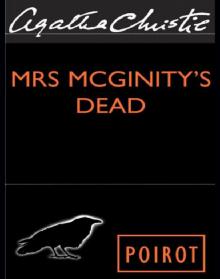 Mrs. McGinty's Dead
Mrs. McGinty's Dead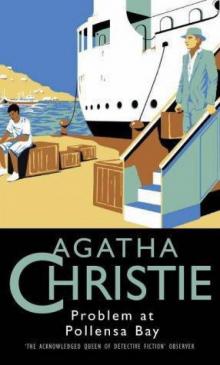 Problem at Pollensa Bay and Other Stories
Problem at Pollensa Bay and Other Stories Death Comes as the End
Death Comes as the End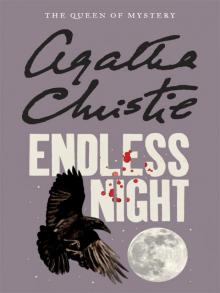 Endless Night
Endless Night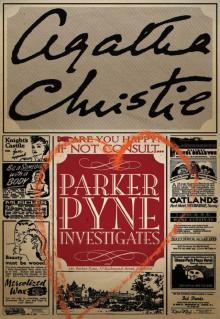 Parker Pyne Investigates
Parker Pyne Investigates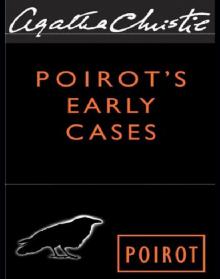 Poirot's Early Cases: 18 Hercule Poirot Mysteries
Poirot's Early Cases: 18 Hercule Poirot Mysteries Murder Is Easy
Murder Is Easy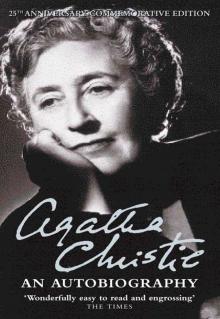 An Autobiography
An Autobiography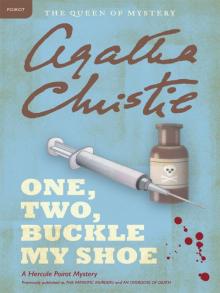 One, Two, Buckle My Shoe
One, Two, Buckle My Shoe A Pocket Full of Rye
A Pocket Full of Rye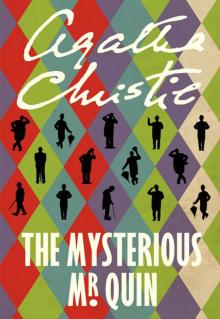 The Mysterious Mr. Quin
The Mysterious Mr. Quin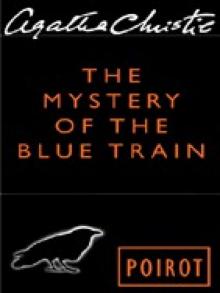 The Mystery of the Blue Train
The Mystery of the Blue Train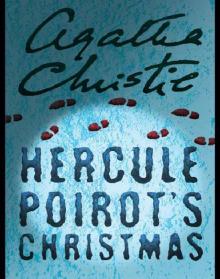 Hercule Poirot's Christmas: A Hercule Poirot Mystery
Hercule Poirot's Christmas: A Hercule Poirot Mystery Cards on the Table (SB)
Cards on the Table (SB) Three Act Tragedy
Three Act Tragedy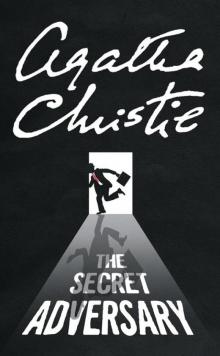 The Secret Adversary
The Secret Adversary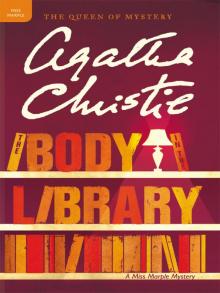 The Body in the Library
The Body in the Library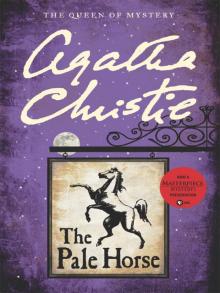 The Pale Horse
The Pale Horse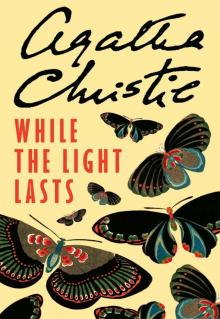 While the Light Lasts
While the Light Lasts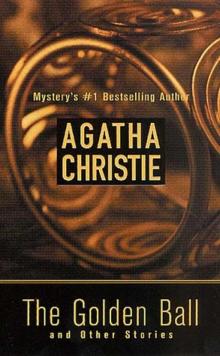 The Golden Ball and Other Stories
The Golden Ball and Other Stories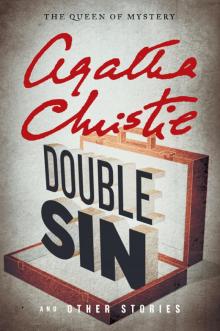 Double Sin and Other Stories
Double Sin and Other Stories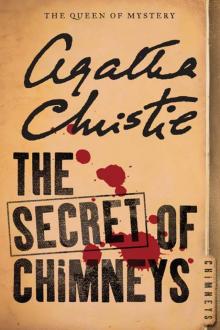 The Secret of Chimneys
The Secret of Chimneys Five Little Pigs
Five Little Pigs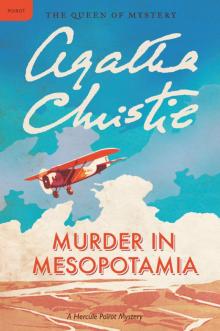 Murder in Mesopotamia: A Hercule Poirot Mystery
Murder in Mesopotamia: A Hercule Poirot Mystery The Mousetrap and Other Plays
The Mousetrap and Other Plays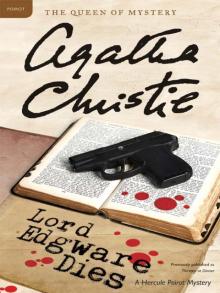 Lord Edgware Dies
Lord Edgware Dies The Hound of Death
The Hound of Death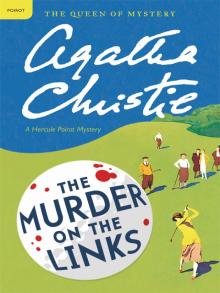 The Murder on the Links
The Murder on the Links A Caribbean Mystery
A Caribbean Mystery Peril at End House: A Hercule Poirot Mystery
Peril at End House: A Hercule Poirot Mystery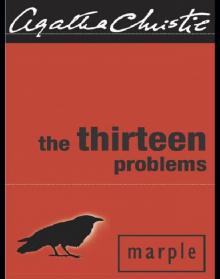 The Thirteen Problems
The Thirteen Problems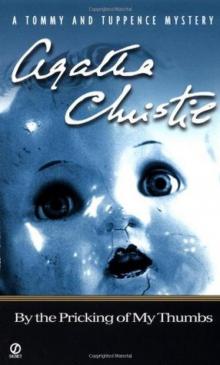 By the Pricking of My Thumbs
By the Pricking of My Thumbs Mrs McGinty's Dead / the Labours of Hercules (Agatha Christie Collected Works)
Mrs McGinty's Dead / the Labours of Hercules (Agatha Christie Collected Works) Appointment With Death
Appointment With Death Murder Is Announced
Murder Is Announced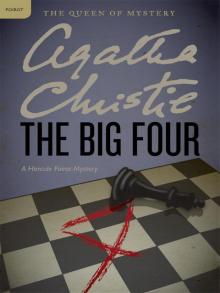 The Big Four
The Big Four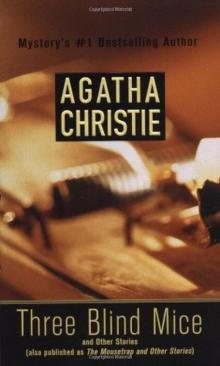 Three Blind Mice and Other Stories
Three Blind Mice and Other Stories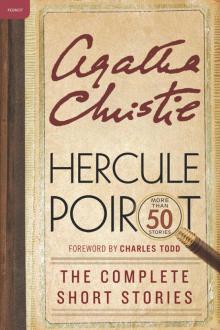 Hercule Poirot- the Complete Short Stories
Hercule Poirot- the Complete Short Stories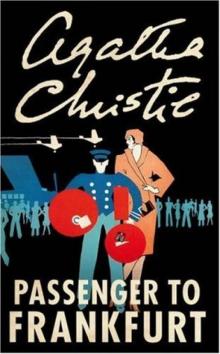 Passenger to Frankfurt
Passenger to Frankfurt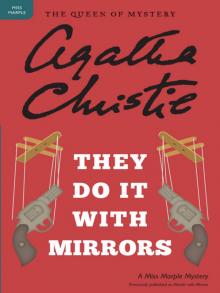 They Do It With Mirrors
They Do It With Mirrors Poirot Investigates
Poirot Investigates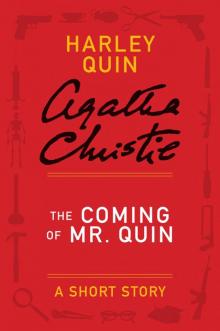 The Coming of Mr. Quin: A Short Story
The Coming of Mr. Quin: A Short Story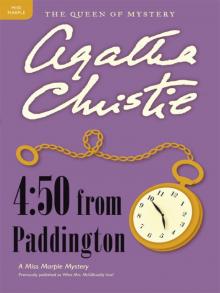 4:50 From Paddington
4:50 From Paddington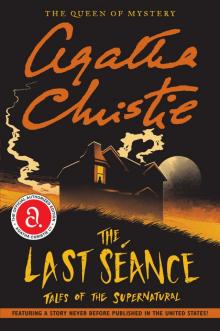 The Last Seance
The Last Seance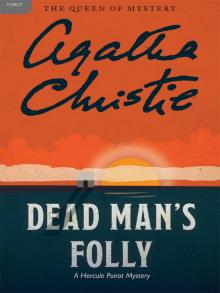 Dead Man's Folly
Dead Man's Folly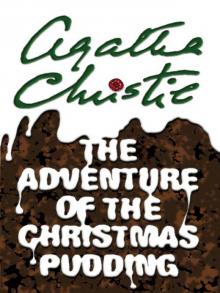 The Adventure of the Christmas Pudding
The Adventure of the Christmas Pudding The A.B.C. Murders
The A.B.C. Murders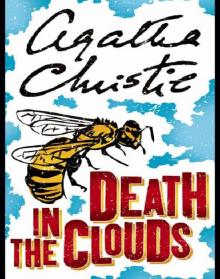 Death in the Clouds
Death in the Clouds Towards Zero
Towards Zero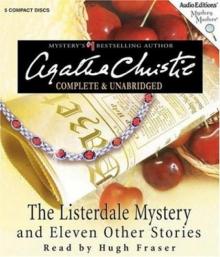 The Listerdale Mystery and Eleven Other Stories
The Listerdale Mystery and Eleven Other Stories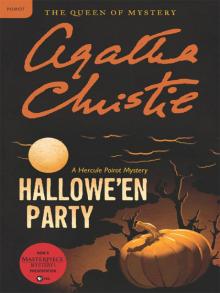 Hallowe'en Party
Hallowe'en Party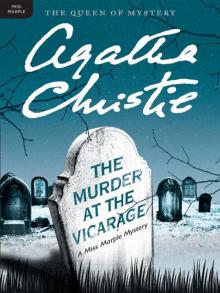 Murder at the Vicarage
Murder at the Vicarage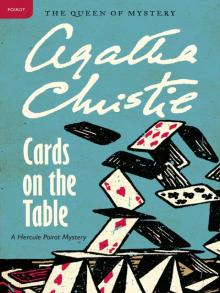 Cards on the Table
Cards on the Table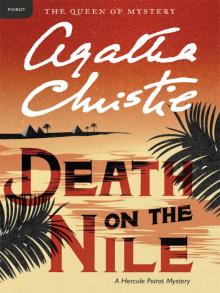 Death on the Nile
Death on the Nile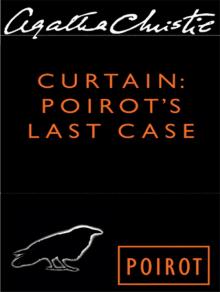 Curtain
Curtain Partners in Crime
Partners in Crime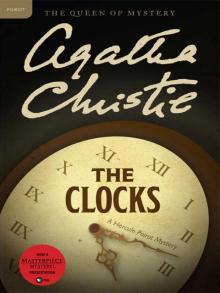 The Listerdale Mystery / the Clocks (Agatha Christie Collected Works)
The Listerdale Mystery / the Clocks (Agatha Christie Collected Works)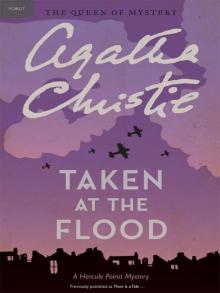 Taken at the Flood
Taken at the Flood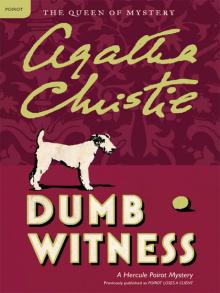 Dumb Witness
Dumb Witness The Complete Tommy and Tuppence
The Complete Tommy and Tuppence Problem at Pollensa Bay
Problem at Pollensa Bay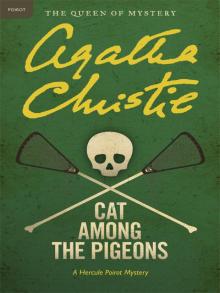 Cat Among the Pigeons
Cat Among the Pigeons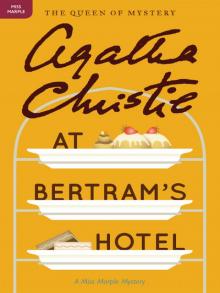 At Bertram's Hotel
At Bertram's Hotel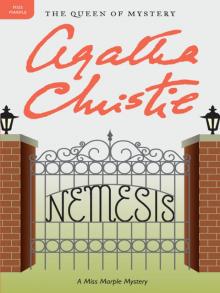 Nemesis
Nemesis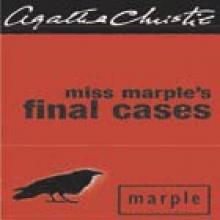 Miss Marple's Final Cases
Miss Marple's Final Cases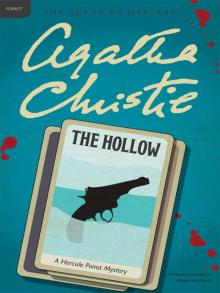 The Hollow
The Hollow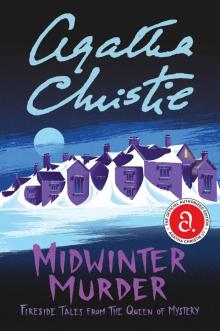 Midwinter Murder
Midwinter Murder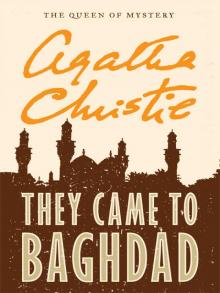 They Came to Baghdad
They Came to Baghdad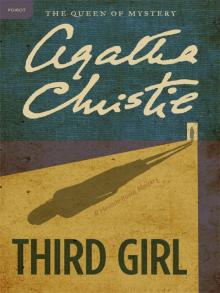 Third Girl
Third Girl Destination Unknown
Destination Unknown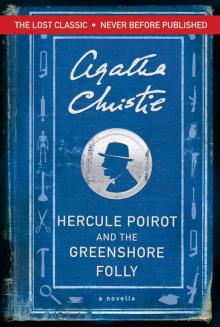 Hercule Poirot and the Greenshore Folly
Hercule Poirot and the Greenshore Folly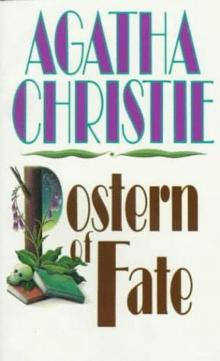 Postern of Fate tat-5
Postern of Fate tat-5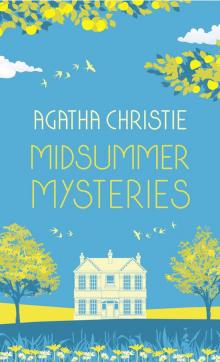 Midsummer Mysteries
Midsummer Mysteries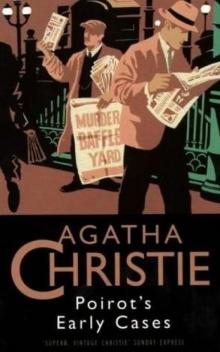 Poirot's Early Cases hp-38
Poirot's Early Cases hp-38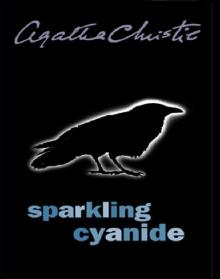 Sparkling Cyanide
Sparkling Cyanide Star over Bethlehem
Star over Bethlehem Black Coffee hp-7
Black Coffee hp-7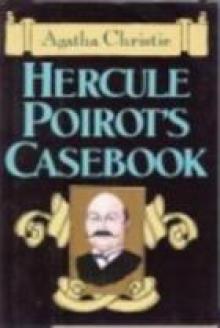 Hercule Poirot's Casebook (hercule poirot)
Hercule Poirot's Casebook (hercule poirot)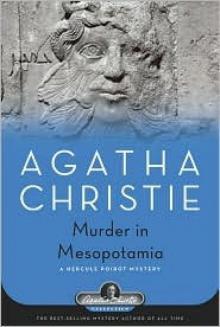 Murder in Mesopotamia hp-14
Murder in Mesopotamia hp-14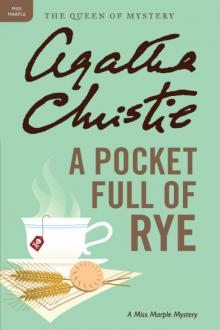 A Pocket Full of Rye: A Miss Marple Mystery (Miss Marple Mysteries)
A Pocket Full of Rye: A Miss Marple Mystery (Miss Marple Mysteries)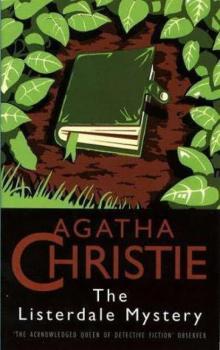 The Listerdale Mystery
The Listerdale Mystery The Complete Tommy & Tuppence Collection
The Complete Tommy & Tuppence Collection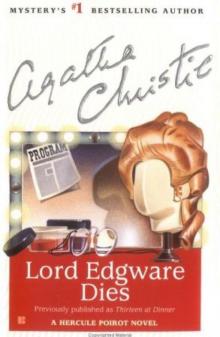 Lord Edgware Dies hp-8
Lord Edgware Dies hp-8 Death in the Clouds hp-12
Death in the Clouds hp-12 Short Stories
Short Stories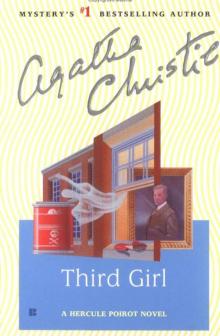 Third Girl hp-37
Third Girl hp-37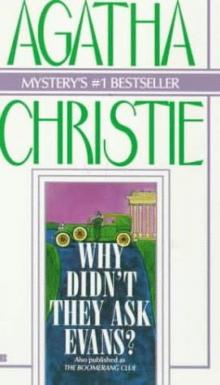 Why Didn't They Ask Evans
Why Didn't They Ask Evans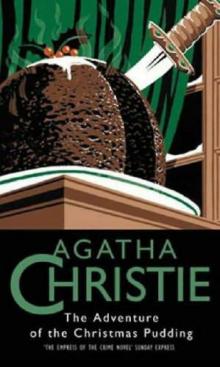 Adventure of the Christmas Pudding and other stories
Adventure of the Christmas Pudding and other stories Cards on the Table hp-15
Cards on the Table hp-15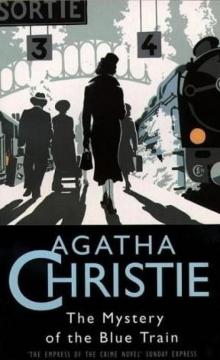 The Mystery of the Blue Train hp-6
The Mystery of the Blue Train hp-6 After the Funeral hp-29
After the Funeral hp-29 Poirot Investigates hp-3
Poirot Investigates hp-3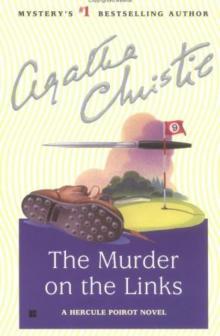 Murder on the Links hp-2
Murder on the Links hp-2 The Mysterious Mr Quin
The Mysterious Mr Quin Curtain hp-39
Curtain hp-39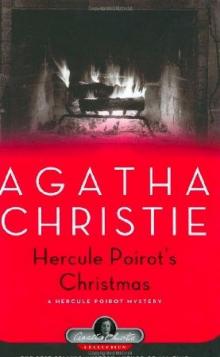 Hercule Poirot's Christmas hp-19
Hercule Poirot's Christmas hp-19 Partners in Crime tat-2
Partners in Crime tat-2 The Clocks hp-36
The Clocks hp-36 Murder, She Said
Murder, She Said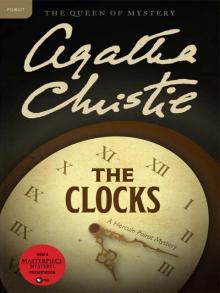 The Clocks
The Clocks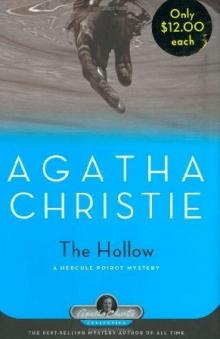 The Hollow hp-24
The Hollow hp-24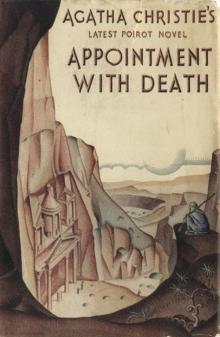 Appointment with Death hp-21
Appointment with Death hp-21 Murder in the mews hp-18
Murder in the mews hp-18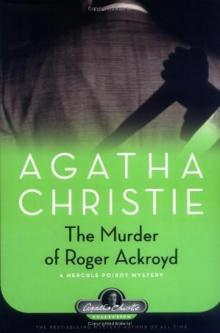 The Murder Of Roger Ackroyd hp-4
The Murder Of Roger Ackroyd hp-4 Dumb Witness hp-16
Dumb Witness hp-16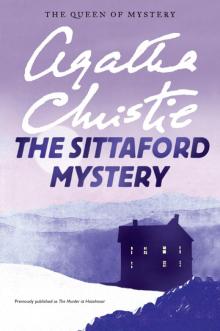 The Sittaford Mystery
The Sittaford Mystery Mrs McGinty's Dead
Mrs McGinty's Dead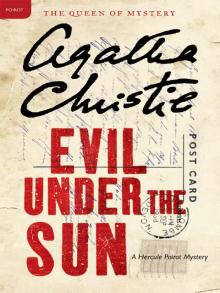 Evil Under the Sun
Evil Under the Sun The A.B.C. Murders hp-12
The A.B.C. Murders hp-12 The Murder at the Vicarage mm-1
The Murder at the Vicarage mm-1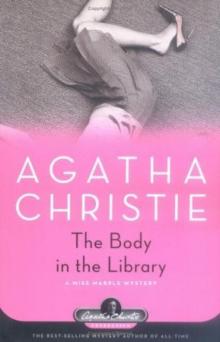 The Body in the Library mm-3
The Body in the Library mm-3 Miss Marple and Mystery
Miss Marple and Mystery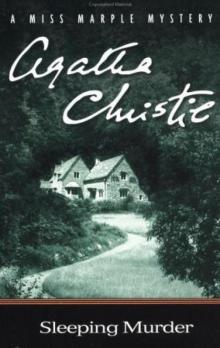 Sleeping Murder mm-14
Sleeping Murder mm-14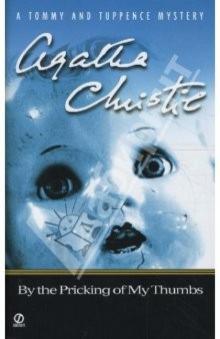 By the Pricking of My Thumbs tat-4
By the Pricking of My Thumbs tat-4 A Pocket Full of Rye mm-7
A Pocket Full of Rye mm-7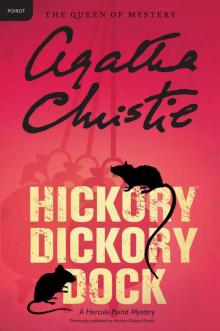 Hickory Dickory Dock: A Hercule Poirot Mystery
Hickory Dickory Dock: A Hercule Poirot Mystery The Big Four hp-5
The Big Four hp-5 The Labours of Hercules hp-26
The Labours of Hercules hp-26 The Complete Miss Marple Collection
The Complete Miss Marple Collection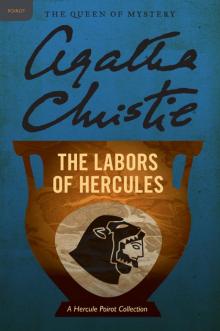 The Labours of Hercules
The Labours of Hercules 4.50 From Paddington
4.50 From Paddington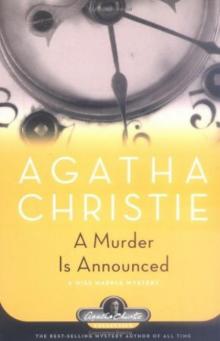 A Murder Is Announced mm-5
A Murder Is Announced mm-5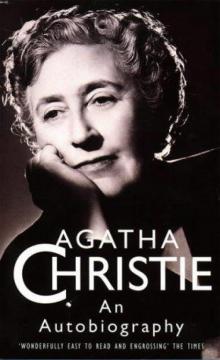 Agahta Christie: An autobiography
Agahta Christie: An autobiography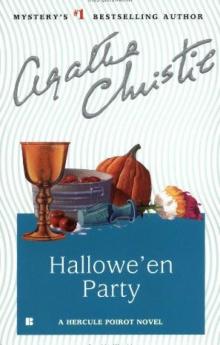 Hallowe'en Party hp-36
Hallowe'en Party hp-36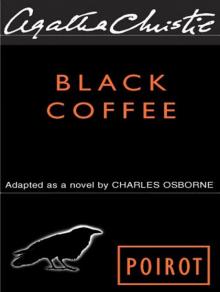 Black Coffee
Black Coffee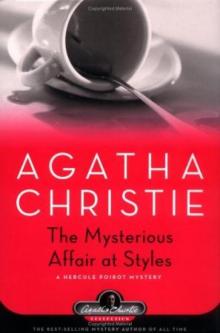 The Mysterious Affair at Styles hp-1
The Mysterious Affair at Styles hp-1 Three-Act Tragedy
Three-Act Tragedy Best detective short stories
Best detective short stories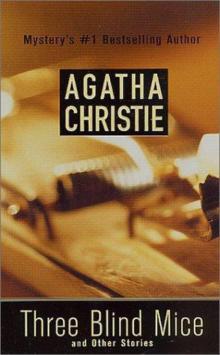 Three Blind Mice
Three Blind Mice Nemesis mm-11
Nemesis mm-11 The Mirror Crack'd from Side to Side mm-8
The Mirror Crack'd from Side to Side mm-8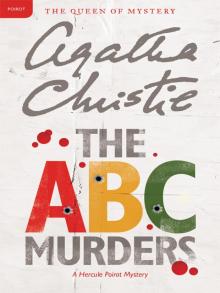 The ABC Murders
The ABC Murders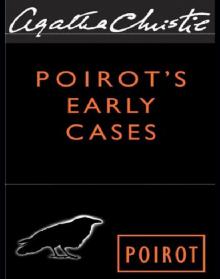 Poirot's Early Cases
Poirot's Early Cases The Unexpected Guest
The Unexpected Guest A Caribbean Mystery - Miss Marple 09
A Caribbean Mystery - Miss Marple 09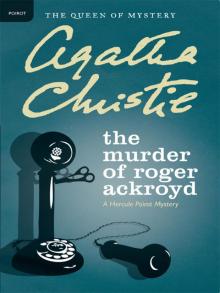 The Murder of Roger Ackroyd
The Murder of Roger Ackroyd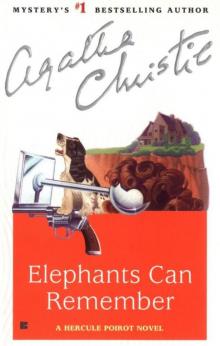 Elephants Can Remember hp-39
Elephants Can Remember hp-39 The Mirror Crack'd: from Side to Side
The Mirror Crack'd: from Side to Side Sad Cypress hp-21
Sad Cypress hp-21 Peril at End House
Peril at End House Elephants Can Remember
Elephants Can Remember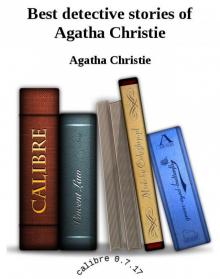 Best detective stories of Agatha Christie
Best detective stories of Agatha Christie Hercule Poirot's Christmas
Hercule Poirot's Christmas The Body In The Library - Miss Marple 02
The Body In The Library - Miss Marple 02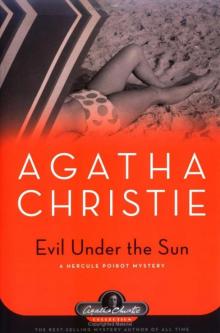 Evil Under the Sun hp-25
Evil Under the Sun hp-25 The Capture of Cerberus
The Capture of Cerberus The Hound of Death and Other Stories
The Hound of Death and Other Stories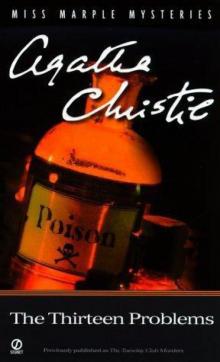 The Thirteen Problems (miss marple)
The Thirteen Problems (miss marple) The Thirteen Problems-The Tuesday Night Club
The Thirteen Problems-The Tuesday Night Club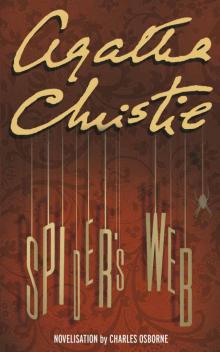 Spider's Web
Spider's Web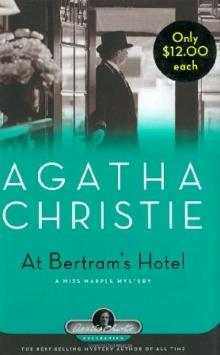 At Bertram's Hotel mm-12
At Bertram's Hotel mm-12 The Murder at the Vicarage (Agatha Christie Mysteries Collection)
The Murder at the Vicarage (Agatha Christie Mysteries Collection)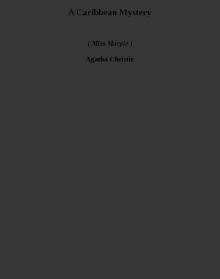 A Caribbean Mystery (miss marple)
A Caribbean Mystery (miss marple) A Murder Is Announced
A Murder Is Announced Clues to Christie
Clues to Christie The Moving Finger mm-3
The Moving Finger mm-3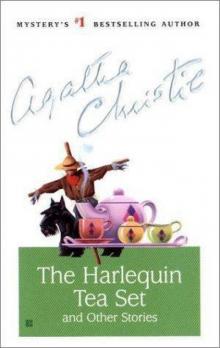 The Harlequin Tea Set and Other Stories
The Harlequin Tea Set and Other Stories Murder on the Links
Murder on the Links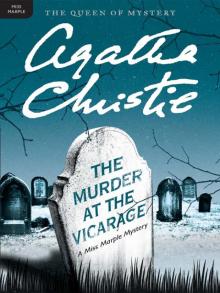 The Murder at the Vicarage
The Murder at the Vicarage N or M tat-3
N or M tat-3 The Secret Adversary tat-1
The Secret Adversary tat-1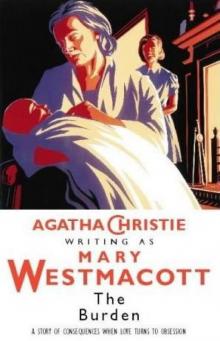 The Burden
The Burden Mrs McGinty's Dead hp-28
Mrs McGinty's Dead hp-28 Dead Man's Folly hp-31
Dead Man's Folly hp-31 Peril at End House hp-8
Peril at End House hp-8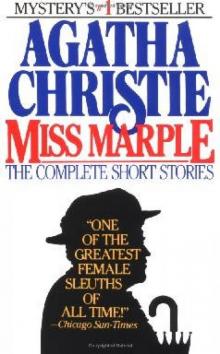 Complete Short Stories Of Miss Marple mm-16
Complete Short Stories Of Miss Marple mm-16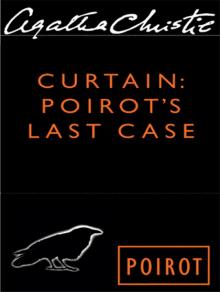 Curtain: Poirot's Last Case
Curtain: Poirot's Last Case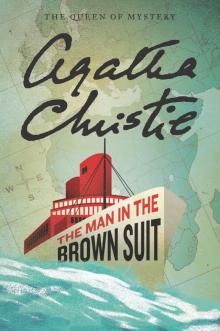 The Man in the Brown Suit
The Man in the Brown Suit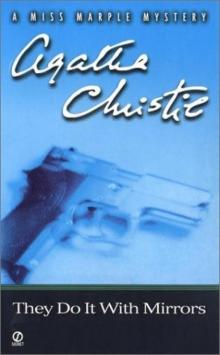 They Do It With Mirrors mm-6
They Do It With Mirrors mm-6